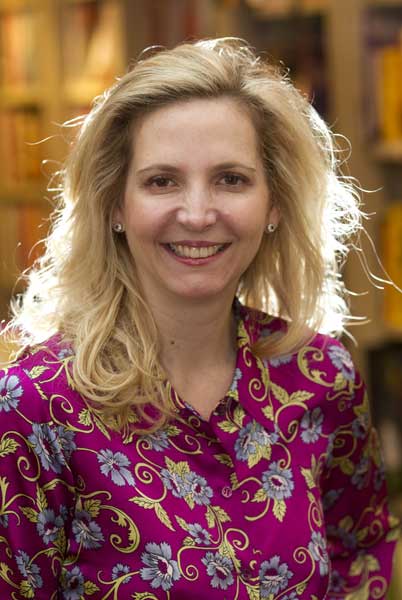One Minute With: Amanda Foreman, historian

Where are you now and what can you see?
I'm in the top-floor office of my home in west London – and I can see into somebody's bedroom across the garden.
What are you currently reading?
'Surface Detail' by Iain M Banks. I feel that he's returned to form. I'm really happy that [his utopian society] The Culture is back – and the humour is back!
Choose a favourite author, and say why you admire her/him
Colm Tóibín. When I read 'The Master', I felt that I had read a true classic. It's so rare nowadays that you have that feeling: it was a privilege to read it.
Describe the room where you usually write
It's a 12-by-12 study that is so crammed with books from floor to ceiling that my children have to step over the piles to get to me. It has a view into a lightwell, and once a day the sun hits the window and a ray of light bounces off into my study.
What distracts you from writing?
The internet: reading news stories. I try to limit what I see.
Which fictional character most resembles you?
I think that once you become a parent you cease to think of yourself as a hero or heroine. When I was in my twenties, I strongly identified with Jane Austen's 'Emma' – her human failings mixed with a desire to do good.
What are your readers like when you meet them?
I'm always impressed by them – and I always like them. If we lived in the same town or village, I'd be very happy to be their friend.
Who is your hero/heroine from outside literature?
Jean McConville. She's one of the IRA's "disappeared" – a Catholic widowed mother of 10 [secretly murdered by the Provisional IRA in 1972]. She lost her life simply for doing what she thought was right. I want her suffering and her sacrifice to be recognised. I think there should be a memorial garden for her.
Amanda Foreman's 'A World on Fire' is published in paperback by Penguin
Join our commenting forum
Join thought-provoking conversations, follow other Independent readers and see their replies
Comments